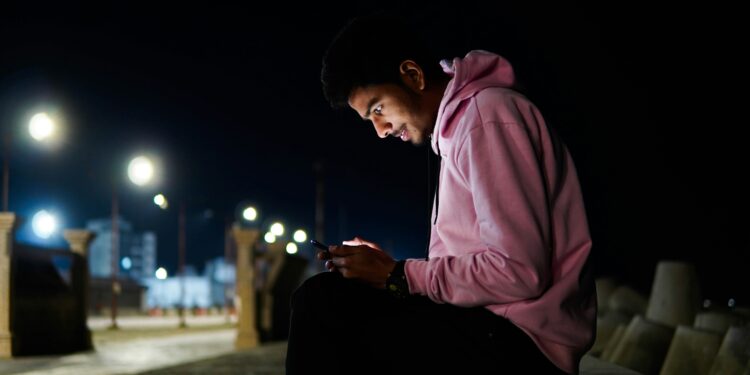Digital Downtime: How Adults Unwind Online After Work

After long hours of deadlines, meetings, and commutes, many adults crave one thing above all: the chance to decompress. For previous generations, stress relief activities might have meant flipping through a book or catching a TV show.
Today, however, downtime has gone digital. Streaming platforms, mobile puzzles, and even online gaming or gambling now serve as central ways adults carve out “me-time” in a world that never quite powers down.
The rise of digital downtime reflects a cultural shift: instead of unplugging completely, we turn to screens for both comfort and control. Let’s explore how this new wave of stress relief activities is shaping evening routines across households worldwide.
Why Digital Downtime Dominates Modern Routines
Work today doesn’t stop at the office door. Emails buzz after hours, Slack notifications intrude on dinner, and global teams often demand flexibility. This constant connectivity means adults need efficient ways to reset.
That’s where digital downtime enters the picture. Accessible, personalized, and endlessly customizable, digital platforms allow adults to tailor relaxation to their unique preferences.
From choosing a light-hearted series on Netflix to diving into an interactive puzzle app, stress relief activities online feel both rewarding and low-effort: a crucial factor after mentally draining workdays.
1. Streaming: The Comfort of Passive Escapism
One of the most popular outlets for digital downtime is streaming. Platforms like Netflix, Hulu, and Disney+ provide instant access to thousands of shows and films. After work, adults often gravitate toward comfort shows or binge-worthy series that require minimal effort to follow.
This kind of passive escapism offers more than just distraction. Neuroscience studies suggest that familiar audiovisual routines help lower cortisol levels, making streaming an effective form of stress management. For many, queuing up a favorite sitcom becomes a nightly ritual that marks the transition from work to leisure—one of many simple but powerful stress relief activities.
2. Mobile Puzzles and Brain Teasers: Engaging, Yet Relaxing
While some unwind by turning their minds off, others prefer stress relief activities that keep them gently engaged. Mobile puzzle games, Sudoku apps, and brain-training platforms provide just that balance. They’re mentally stimulating but not overwhelming, helping adults transition into a calmer mental state.
These apps have exploded in popularity because they’re quick, portable, and endlessly replayable. Whether during a commute or before bed, they offer short bursts of relaxation that feel productive yet enjoyable. For many adults, puzzles serve as the perfect middle ground: a light challenge that doubles as a digital wellness habit.
3. Casual Gaming and Online Play: Interactive Stress Relief Activities
Beyond puzzles and passive streaming lies a more interactive form of downtime: casual gaming. Adults increasingly turn to easy-to-learn games that deliver fun without demanding long-term investment. Titles ranging from cozy farming simulators to competitive mobile matches provide an engaging break from routine.
For some, this extends into online gaming platforms where interactive play offers social connection as well as entertainment. Even light gambling experiences—like online slots or live table games—are approached by many as recreational diversions, woven discreetly into evening rituals.
In moderation, these forms of stress relief activities offer adults both variety and a sense of excitement, without requiring travel or extensive preparation.
4. Social Connection Through Digital Leisure
Relaxation isn’t always solitary. Many adults use downtime to reconnect socially through digital means. Platforms like Discord, Twitch, and group video calls blend entertainment with companionship. Watching a livestream together or joining a casual multiplayer session provides an easy way to bond without logistical hurdles.
This form of “digital togetherness” has grown in importance, especially for those balancing demanding jobs with limited time for in-person meetups. In these cases, stress relief activities that merge relaxation and connection become invaluable.
5. Fitness and Mindfulness Apps: Blending Leisure with Wellness
Not all digital downtime revolves around entertainment. Wellness apps are becoming another staple in adult routines. Guided meditation platforms like Calm, yoga videos on YouTube, and even VR fitness sessions help individuals reset both mentally and physically.
These activities reflect a growing awareness of holistic well-being. For those who feel drained after work, digital wellness platforms offer quick but effective ways to lower stress, improve focus, and prepare the body for restful sleep. They expand the definition of downtime by turning screens into tools for active recovery.
Rituals and the Psychology of Digital Me-Time
What makes digital downtime effective is not just the activity itself, but the ritual it creates. Humans thrive on rituals because they offer predictability and control—two qualities often lacking in fast-paced work environments.
Whether it’s logging into a favorite game, queuing up an episode of a familiar series, or winding down with a meditation app, these repeated behaviors signal to the brain: “work is over, now it’s time to relax.” Over time, these small digital cues reinforce a rhythm of stress relief that’s deeply personal yet widely shared.
Balancing Screen Time With Real Rest
Of course, not all digital downtime is restorative. Overuse of screens can disrupt sleep patterns, increase anxiety, or lead to digital fatigue. The key is balance. Experts recommend setting intentional boundaries: use streaming and games as rewarding stress relief activities, but complement them with offline habits like journaling, walking, or simply unplugging before bed.
Employing this hybrid model ensures that digital downtime enhances rather than undermines overall well-being.
Final Thoughts: Redefining Relaxation in the Digital Era
The way adults relax has undergone a quiet revolution. Where downtime once meant a paperback novel or evening television, it now includes an array of digital options—streaming, mobile puzzles, casual gaming, and even light forays into online platforms.
These stress relief activities aren’t just about passing the time. They reflect a deeper cultural adaptation: the need for efficient, customizable, and accessible forms of relaxation in a world that blurs boundaries between work and leisure.
By consciously shaping these routines and choosing activities that soothe rather than overstimulate, adults can reclaim evenings as restorative spaces. The future of downtime isn’t about disconnecting entirely. It’s about learning how to connect on our own terms.








